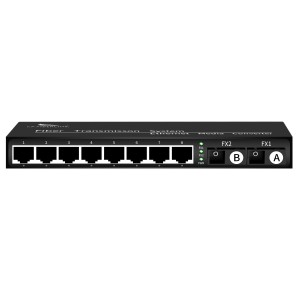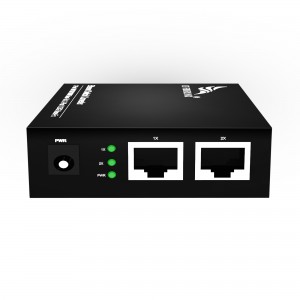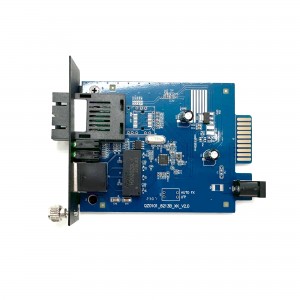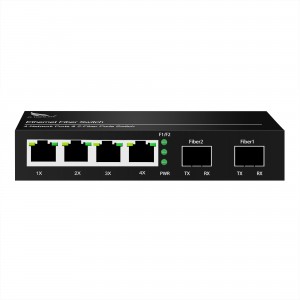10-port 10/100/1000M WDM Media Converter (Single-mode Single-fiber SC)
10-port 10/100/1000M WDM Media Converter (Single-mode Single-fiber SC)
Product Features:
Launched Gigabit 8 optical 2 electrical single-mode single-fiber 3km B end: the ultimate solution for data center connections
Welcome to Huizhou Changfei Optoelectronics Technology Co., Ltd., a leading communication equipment manufacturer located in Huizhou, China. Since our establishment in 2009, we have a proven track record of excellence and we pride ourselves on being able to provide innovative and quality products to meet the ever-changing needs of the market. As an innovative high-tech enterprise, we focus on 5G communication equipment, 10G core switches, fiber optic transceivers and other communication equipment.
In today’s fast-paced digital age, data centers play a vital role in ensuring seamless connectivity and reliable data transmission. As the need for higher bandwidth and faster network speeds continues to escalate, it is critical to invest in cutting-edge technology that can meet these demands. Introducing the newest member of our product range: Gigabit 8 Optical 2 Electrical Single Mode Single Fiber 3km B-end.
Our Gigabit 8 optical 2 electrical single-mode single-fiber 3km B-end is specially designed for data center optical fiber network and is the ultimate solution for efficient and reliable connection. This state-of-the-art transceiver integrates seamlessly with fiber optic media converters and switches, enabling data centers to deliver superior performance and unmatched reliability.
With its impressive features, our products ensure a seamless and reliable data transfer experience. It boasts gigabit data transfer rates for lightning-fast communication and efficient processing of massive amounts of data. Whether it’s data-intensive applications, video streaming, or cloud-based services, our transceivers ensure smooth, uninterrupted operations and eliminate bottlenecks in data center networks.
Additionally, our Gigabit 8 Optical 2 Electrical Single Mode Single Fiber 3km B-end offers impressive security features to protect your data center infrastructure. With an IP30 rating, it’s ruggedized against dust and debris, ensuring reliable, uninterrupted performance even in harsh environments. In addition, its external power port supports 4KV lightning protection, protecting your valuable equipment from power surges and electrical instability.
At Huizhou Changfei Optoelectronics Technology Co., Ltd., we are committed to providing innovative, high-quality communication equipment to meet the diverse needs of global customers. With a production base of more than 20,000 square meters and a dedicated team of more than 30 experienced professionals, we strive to provide excellence in every product.
To sum up, Gigabit 8 optical 2 electrical single-mode single-fiber 3km B end is the perfect solution for data center optical fiber connection. Our transceivers combine lightning-fast gigabit data transfer rates, impressive safety features such as IP30 protection, and external power ports with 4KV lightning protection to ensure seamless, reliable and secure data transmission . Please believe that Huizhou Changfei Photoelectric Technology Co., Ltd. can meet all your communication equipment needs.
Technical Parameter:
|
Model |
CF-8012GSW-3B | |
| Interface Characteristics | ||
|
Fixed Port |
2* 10/ 100/ 1000Base-T RJ45 port 8* 1000Base-X uplink SC fiber port |
|
|
Ethernet Port |
10/ 100/ 1000Base-T auto-sensing, full/half duplex MDI/MDI-X self-adaption |
|
|
Twisted Pair Transmission |
10BASE-T: Cat3,4,5 UTP(≤100 meter) 100BASE-T: Cat5e or later UTP(≤100 meter) 1000BASE-T : Cat5e or later UTP(≤100 meter) |
|
| Optical Port | Default optical module is single-mode single-fiber 3km, SC port | |
| Wavelength/Distance | A-end: RX1310nm / RX1550nm 0 ~ 40KM
B-end:RX1550nm/ RX1310nm 0 ~ 40KM |
|
| A-end: RX1490nm / RX1550nm 0 ~ 120KM
B-end:RX1550nm/ RX1490nm 0 ~ 120KM |
||
| Chip Parameter | ||
| Network Protocol | IEEE802.3 10BASE-T, IEEE802.3i 10Base-T,
IEEE802.3u 100Base-TX, IEEE802.3u 100Base-FX, IEEE802.3x IEEE802.3ab 1000Base-T;IEEE802.3z 1000Base-X; |
|
|
Forwarding Mode |
Store and Forward(Full Wire Speed) |
|
|
Switching Capacity |
20Gbps |
|
|
Buffer Memory |
14.88Mpps | |
|
MAC |
2K | |
|
LED Indicator |
Fiber | FX1-FX8 |
| On the RJ45 seat | 1X-2X Yellow:Indicate PoE | |
| 1X-2X Green: Indicates network working status | ||
| Power | PWR (green) | |
| Power | ||
| Working Voltage |
AC:100-240V |
|
|
Power Consumption |
Standby<3W, Full load<10W |
|
|
Power Supply |
DC:5V/2A industrial power supply |
|
| Lightning protection &Certification | ||
| Lightning protection | Lightning protection: 4KV 8/20us, Protection level: IP30 | |
| Certification | CCC;CE mark, commercial; CE/LVD EN60950;FCC Part 15 Class B; RoHS | |
| Physical Parameter | ||
| Operation TEMP | -20~+55°C;5%~90% RH Non condensing | |
| Storage TEMP |
-40~+85°C;5%~95% RH Non condensing |
|
| Dimension (L*W*H) | 220mm* 101mm*28mm | |
| Installation | Desktop | |
Product Size:
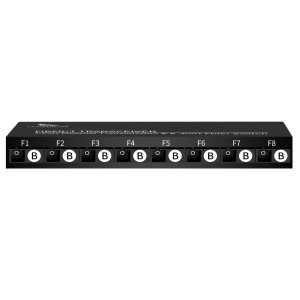
product application diagra:

How to choose a fiber optic transceiver?
Optical fiber transceivers break the 100-meter limitation of Ethernet cables in data transmission. Relying on high-performance switching chips and large-capacity caches, while truly achieving non-blocking transmission and switching performance, they also provide balanced traffic, isolation and conflict. Error detection and other functions ensure high security and stability during data transmission. Therefore, fiber optic transceiver products will still be an indispensable part of actual network construction for a long time. So, how should we choose fiber optic transceivers?
1. Port function test
Mainly test whether each port can work normally in the duplex state of 10Mbps, 100Mbps and half-duplex state. At the same time, it should be tested whether each port can automatically select the highest transmission speed and automatically match the transmission rate of other devices. This test can be included in other tests.
2. Compatibility test
It mainly tests the connection ability between the optical fiber transceiver and other devices compatible with Ethernet and Fast Ethernet (including network card, HUB, Switch, optical network card, and optical switch). The requirement must be able to support the connection of compatible products.
3. Cable connection characteristics
Test the fiber optic transceiver’s ability to support network cables. First, test the connection ability of Category 5 network cables with lengths of 100m and 10m, and test the connection ability of long Category 5 network cables (120m) of different brands. During the test, the optical port of the transceiver is required to have a connection capability of 10Mbps and a rate of 100Mbps, and the highest must be able to connect to a full-duplex 100Mbps without transmission errors. Category 3 twisted pair cables may not be tested. Subtests can be included in other tests.
4. Transmission characteristics (transmission loss rate of data packets of different lengths, transmission speed)
It mainly tests the packet loss rate when the optical fiber transceiver optical port transmits different data packets, and the connection speed under different connection rates. For the packet loss rate, you can use the test software provided by the network card to test the packet loss rate when the packet size is 64, 512, 1518, 128 (optional) and 1000 (optional) bytes under different connection rates. , the number of packet errors, the number of packets sent and received must be more than 2,000,000. Test transmission speed can use perform3, ping and other software.
5. The compatibility of the whole machine to the transmission network protocol
It mainly tests the compatibility of fiber optic transceivers to network protocols, which can be tested in Novell, Windows and other environments. The following low-level network protocols such as TCP/IP, IPX, NETBIOS, DHCP, etc. must be tested, and the protocols that need to be broadcast must be tested. Optical transceivers are required to support these protocols (VLAN, QOS, COS, etc.).
6. Indicator status test
Test whether the status of the indicator light is consistent with the description of the panel and the user manual, and whether it is consistent with the current status of the fiber optic transceiver.








